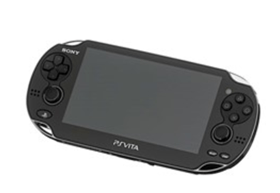- Home
- News & Insights
- Insights
- The importance of tr…
- Auf dieser Seite
30. November 2021
Brands Update – November 2021 – 1 von 3 Insights
The importance of the specification - Sony's VITA registration revoked for non-use
- Quick read
What happened?
- Sony acquired an EUTM registration for the word mark VITA for various class 9 goods, including "data carriers containing programs" and "audio and/or image carriers (not of paper)". In 2011, Vieta Audio applied to revoke the registration for non-use.
- Sony submitted evidence of use of the VITA mark, primarily in connection with its PlayStation Vita (a handheld gaming console). The case hinged on whether use in relation to a handheld gaming console could be considered use in relation to a "data carrier containing programs" or an "audio and/or image carrier".
- The General Court upheld the earlier EUIPO rulings that it could not. While the PlayStation Vita was, technically, a "data carrier containing programs" or an "audio and/or image carrier" that was not how it had been promoted to consumers. Additionally, it stored system software only.

Want to know more?
The central question in this case was whether use in relation to a handheld gaming console could be considered use in relation to a "data carrier containing programs" or an "audio and/or image carrier". The General Court considered that the purpose or intended use of the products in question, as determined by consumers, was critical to this question (as opposed to any technical definition of the product).
In its earlier ruling, the Board of Appeal had taken the view that Sony had promoted the gaming experience of the PlayStation Vita to consumers, not its potential storage capacity (which was only mentioned in the PlayStation Vita's technical specification).
While the PlayStation Vita was, technically, a "data carrier containing programs" or an "audio and/or image carrier", that was not how it had been promoted to consumers. The data/audio/image carrier functions were ancillary to the PlayStation Vita's main purpose, a transportable gaming device. The multi-functionality of the device was irrelevant.
Although the data carrier function was mentioned in the evidence submitted by Sony, this was only by reference to the fact the PlayStation Vita stored the system's software; it was a necessary function and not the exclusive (or one of the main) purposes of the console.
The General Court's decision highlights:
- How consumers view products is key to how the courts will assess genuine trade mark use. In determining this, the courts will look at how the product/service has been promoted to consumers.
- A trade mark must be used for its registered goods and services. Considered thought should be given to trade mark specifications at the outset, as well as the business' use (and promotion) of the registered mark.
- Establishing reputation in the EU does not guarantee that the mark will be deemed to have been put to genuine use. Reputation and use are different concepts. Thus, famous marks won't always escape revocation.
Find out more
To discuss the issues raised in this article in more detail, please reach out to a member of our Brands & Advertising team.
In dieser Serie
The importance of the specification - Sony's VITA registration revoked for non-use
30. November 2021
The importance of stylisation - GT RACING v GT (logo)
30. November 2021
von Louise Popple


